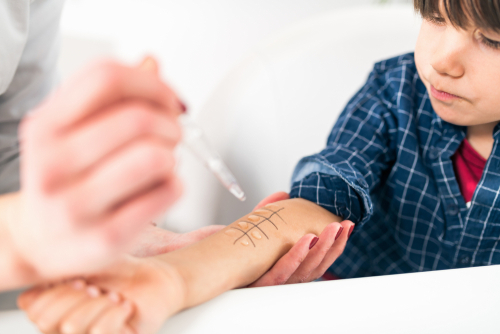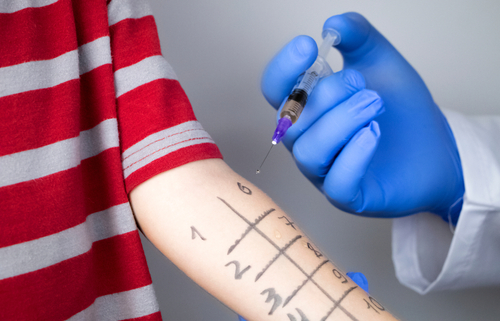Allergies make themselves known in a variety of ways. The symptoms of an allergy can also mimic other health conditions, which makes accurate diagnosis difficult. Undergoing a comprehensive allergy evaluation ensures that you or your child is thoroughly tested for all possible environmental triggers to see what might be causing an allergic reaction. Learn who is a good candidate for this test through a consultation with Gillian Bassirpour of RyanRae Skin in Orange County.


Checking for Irritants with a Comprehensive Allergy Evaluation
When the skin begins to react, it’s a sign that something isn’t quite right in the body. Itching, redness, and eczema are common side effects when allergies are in play. Irritation could be caused by something in the home or a particular food, but a guessing game is not the most adept way to determine what’s going on in your body or your child’s body, especially when the symptoms of an allergy can be so uncomfortable.
A comprehensive allergy evaluation includes testing for a reaction to:
- Tree pollen
- Mold
- Weeds
- Grass
- Pet dander
- Dust mites
- Peanuts
Knowing for certain the source of an allergy and the cause of a skin reaction is the biggest battle toward adequately treating the problem. The goal is to correct the condition and minimize flare-ups permanently, not just put a bandage on an irritation until it goes away.
Skin Testing for Allergies
During skin testing as part of the comprehensive allergy evaluation, also known as a skin prick test, allergens are introduced into the skin and the skin is observed for the development of rashes, bumps, or other reactions. Allergy tests are performed to:
- Identify allergy triggers that can worsen symptoms or bring on an outbreak
- Follow up after a severe allergic reaction
- Determine whether respiratory symptoms accompany skin symptoms
- Look for blisters, hives, swelling, a skin rash, itchy skin, or a burning sensation
In the skin prick test, a thin need is used to prick the skin of the back or forearm with a predetermined number of potential allergens. Alternatively, droplets of potential allergens may be dripped onto the skin and scratched to lightly puncture the area and allow the liquid to enter the skin.
The doctor performing the skin prick test watches carefully for reactions and how long it takes for it to appear.

Evaluating Patients using Intradermal Testing
An intradermal skin test may be called for if the results of a skin prick test are inconclusive or if they are negative and the problem persists for the patient. Like the skin test, the intradermal test requires small amounts of an allergen to be injected into the outer layer of the skin. This comprehensive allergy evaluation checks for allergies to things like environmental irritants and medications.
Relying on the Patch Test for Allergy Evaluation
For anyone suffering from contact dermatitis, a patch test can determine the cause of the problem. Drops of an allergen are placed onto the skin and covered with a bandage, or a bandage with the allergen on it is applied to the skin. The bandage is left on for a set number of hours then removed to check for a skin rash or other reaction.
Get a Comprehensive Allergy Evaluation in Los Angeles
Along with skin prick testing, intradermal testing, and patch testing, your doctor may want to do food testing or drug challenges to determine if the cause of skin irritation is to be found. No matter what comprehensive allergy evaluation Dr. Bassirpour recommends, every evaluation is done in the comfort of your own home. If you suspect that your skin problems or those of your child are the result of allergies, contact RyanRae Skin in Los Angeles. to schedule an appointment.





